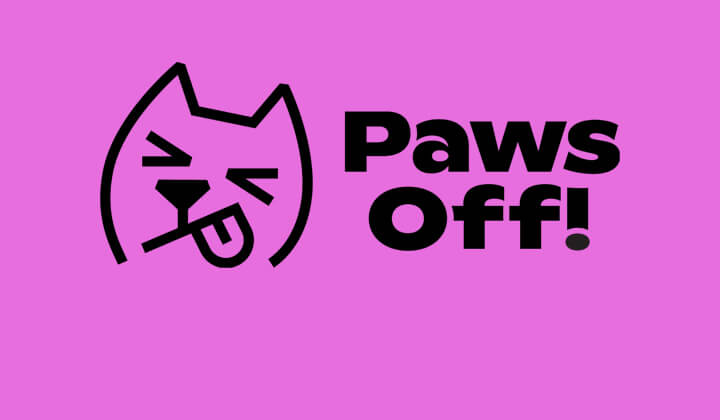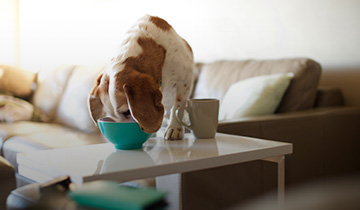Mark Vette is a world-renowned Animal Behaviourist, Zoologist and Trainer. He brings together a unique combination of academic studies with 40 years of applied clinical animal behaviour consulting and treatment. Mark is a member of the International Association of Animal Behaviour Consultants. This article was written by Mark and the views expressed are his own.
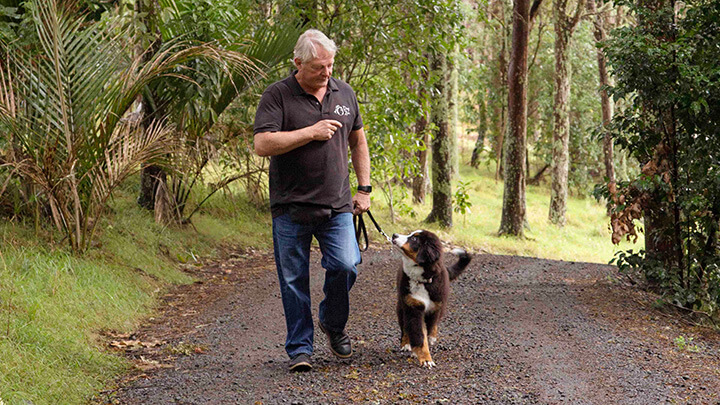
How to prevent your dog becoming sick from dangerous foods
Many thousands of dogs in New Zealand become sick (and sadly, worse) each year from consuming things they shouldn’t have, whether that be toxic foods, choking hazards, bones that splinter, or items that cause an obstruction or perforation of the bowel.
How big is the risk?
Between July 2021 and November 2022, Southern Cross Pet Insurance alone had more than 2800 claims relating to pets eating something they shouldn’t have. Many of these claims required surgery, with one dog requiring $15,000 worth of treatment. Some incidents may even result in the dog’s death.
Many common human foods can be harmful to our pets, with chocolate, bones, raisins, grapes, corn cobs and peach stones being some of the biggest culprits. Puppies and smaller dog breeds require extra vigilance, as being smaller and lighter means that even a small quantity of a harmful food can do damage.
So how can we prevent harm from dangerous foods?
1. Prevention is better than cure
By far the best approach is taking steps to prevent your dog from having access to any potentially harmful foods. Knowledge is power, so make sure everyone who lives in your household or cares for your pet knows which foods are not nice for dogs.
Check out Paws Off! to learn which common foods are harmful and why. Some common culprits include chocolate, grapes, raisins, onions, garlic, avocado, whole stone fruits, caffeine, alcohol, leeks, chives and macadamia nuts.
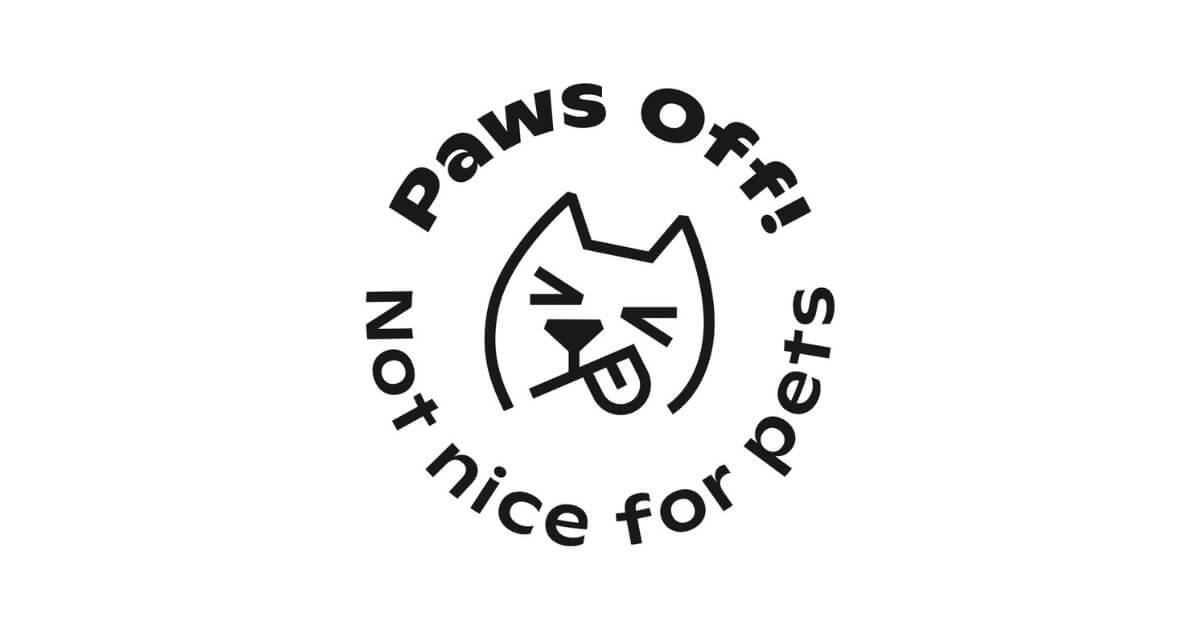
Also get in the habit of looking out for the Paws Off! labels on foods. If you see Paws Off! it’s not safe to share with your pet.
Keep all harmful foods well out of reach of your dog (that means off the bench, dining table and coffee table too). Monitor young children if they are eating these foods with your dog nearby. Also, ensure rubbish bins are kept secure and not easily accessed by your dog.
2. Work on begging behaviour
When your dog begs, it can be hard to resist sharing! 40,000 odd years of evolution has taught dogs exactly what to do to tug on our heart strings and get what they want from us - those puppy dog eyes flood us with warm fuzzy oxytocin that make it almost impossible to resist.
Even if you do have good self-control yourself, if your dog is in the habit of begging, others may not be so careful about what they do and don’t share with your pet.
So, remove the temptation by teaching your dog not to beg from humans that are eating.
Don’t feed from your plate
One of the easiest things to do is never feed your dog from your own plate or while you’re snacking. If you do, this reinforces that begging behaviour (food is the most powerful natural driver, so even getting a tidbit from you rewards that habit!). If you really wish to share safe leftovers with your dog, check nothing in the scraps is harmful and wait until you’ve finished your meal then put the scraps in your dog’s own food bowl. Make sure friends and family members are on board with this too (particularly kids!). Consistency is key.
Feed your dog first
Feed your dog before you have your dinner, that way it will be easier for them to settle down while you’re eating. However, with dominant dogs, you should eat first so use the other tips in this case.
Teach good basic commands
On Your Mat, Outside, Away, Down and Stay are useful commands to prevent begging for food. The more consistently you use them and follow through while you’re eating, the more automatically your dog will simply stay away from the table at mealtimes.
Use a clip station
A clip station is an excellent way to contain your dog so they can’t beg at the table, while still allowing them to be nearby and part of the family dynamic and social space. A clip station is just a short lead or chain screwed into the baseboard of the wall or looped around a heavy piece of furniture, with a dog bed or mat underneath. Your dog will need to be trained to accept a clip station (start with very short periods of time, staying close by and giving your dog a nice treat to chew on). But once you’ve done this it will become a place of peace and calm that your dog loves to be! It’s a great place to put your dog to keep them out of the way when you’re eating, without having to send them outside. It’s a good idea to leave them with a stuffed Kong or something of their own to help them settle and not compete for your food (especially when first introducing this tool).
3. Teach your dog not to jump up
Ideally starting with a young pup, train your dog to keep all four paws on the ground. Use a clicker to mark the behaviour you want as part of this training, it really helps! We have a blog here on how to introduce a clicker if you’ve never used one before.
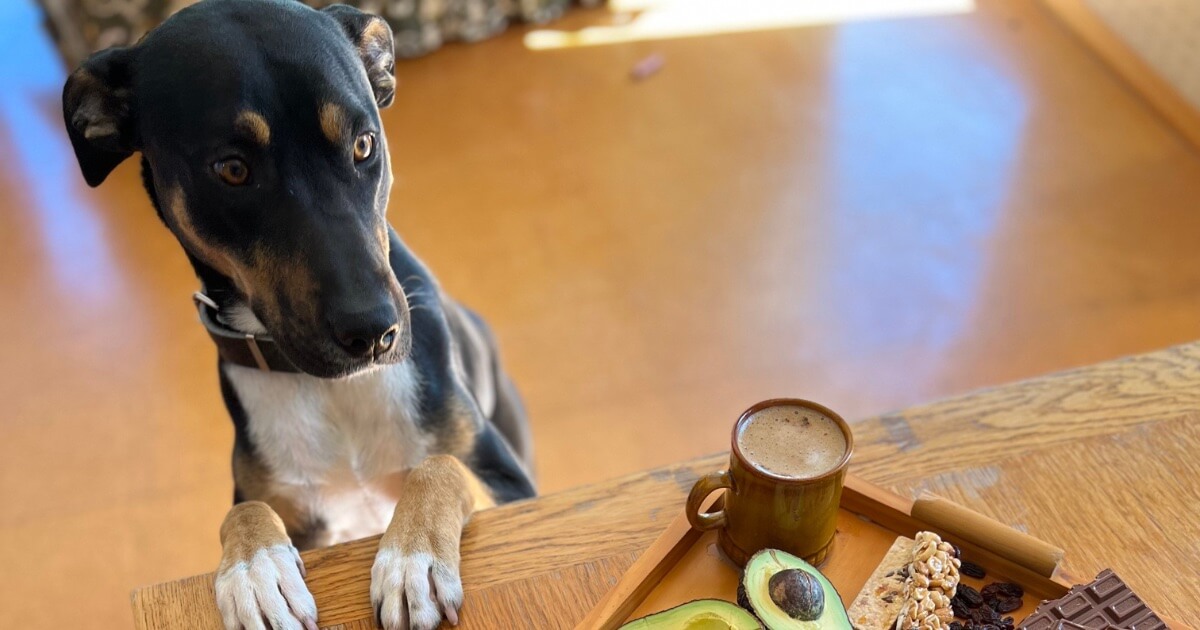
- Click and reward your pup regularly for keeping all four paws on the ground when interacting with you or others, or when your pup comes up to stand by the couch for a cuddle.
- If your pup jumps up (on you or someone else) then give a firm OFF command. Click the instant your pup’s four paws are back on the ground, then follow up with a food reward.
- Your tone of voice may be enough, if not you can gently but firmly push your pup off as you give the OFF command. Always click and reward as soon as your pup’s feet are back down on the ground.
- You need to be consistent with this command as jumping up is an asking behaviour for dogs. The next tip covers how to teach your dog a better asking behaviour (Zen Sit).
4. Teach your dog how to “ask” for what they want politely
I call this ‘Zen Sit’ - it’s when your pup automatically sits and gazes up at you. You can teach even very young pups right through to adult dogs how to do this as a way of “asking” for something they want.
If you practise this often enough, it will become part of your dog’s automatic way to indicate they want something from you, be that pats or food or anything else.
The bond gaze activates oxytocin and so strengthens your bond with your dog and produces dopamine that internally rewards the behaviour and switches the dog into a calm learning state, making them relaxed and attentive (who doesn’t want a dog like that?!).
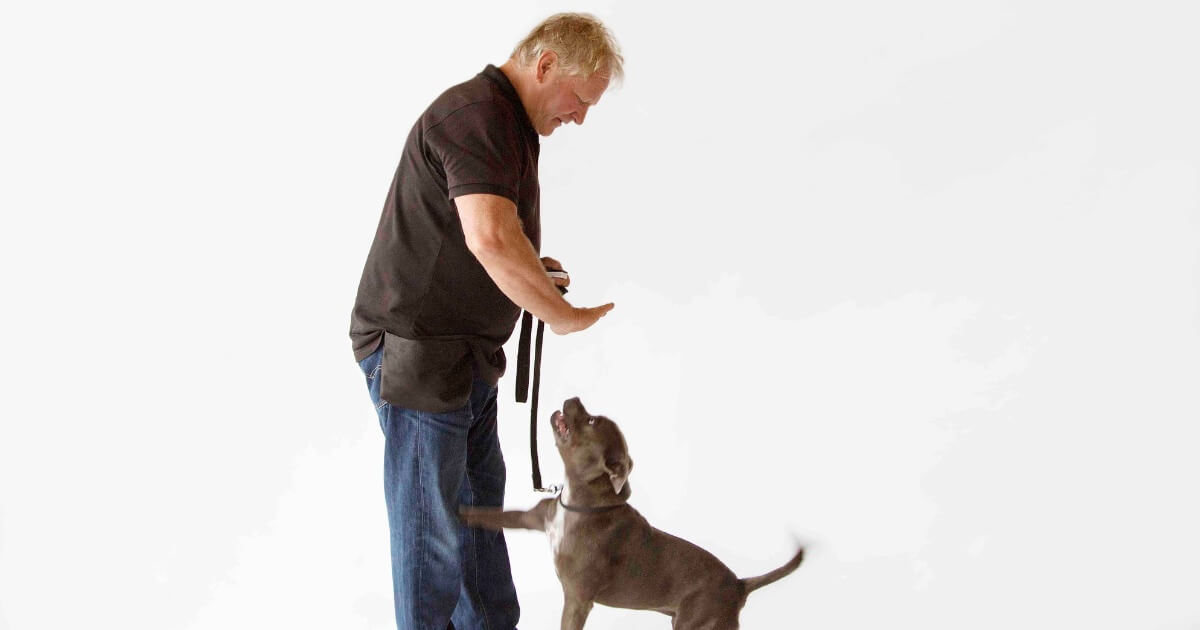
To teach this:
- First get your pup into a Sit
- Hold a treat in your hand up at your eye level to direct your dog’s eye line toward yours – click and reward gentle eye contact
- Ensure your treat hand is near your eyes so they see your eyes, not just the food – reward the eye contact not just looking in the general direction
- If they are not looking into your eyes, wiggle a finger on your lure hand so the movement draws their attention and/or give a slight whistle/noise or call their name to get their attention
- CLICK the second you get their eye contact, then follow up with a treat
- Don’t put your hand in your pouch to get the treat during this process as they’ll follow that hand with their eyes
- Repeat a few times in this first session
- Practise as part of your training 2-3 times per day
- Remember to keep your eyes soft, not staring (smile too). You are rewarding your pup’s soft eyes too, not hard staring which is a dominance signal
- Once you’ve got it going well, you can introduce a Watch command. Then you can stop using a treat to get their eyes up to yours and instead just hold your hand up at your eye line and say Watch! and wiggle a finger if necessary. Soon you won’t need to use the hand at all
- If you practise this frequently, you will find your dog begins to sit and look up to you for direction automatically, without any command needed! This is incredibly useful for all aspects of dog training.
Go forth and protect!
I know it’s awful to think about this happening to your dog. But if we know what foods can harm our dogs and we take steps to stop them getting hold of those foods then it’s much easier to keep our special buddies safe.
Remember there are four keys to food safety:
- Know what foods can harm your dog
- Keep them out of reach
- Teach them not to jump up or beg
- Watch out for the Paws Off! label on foods
Together, these can go a long way towards stopping your pup eating something it shouldn’t and therefore the distress that can cause.


